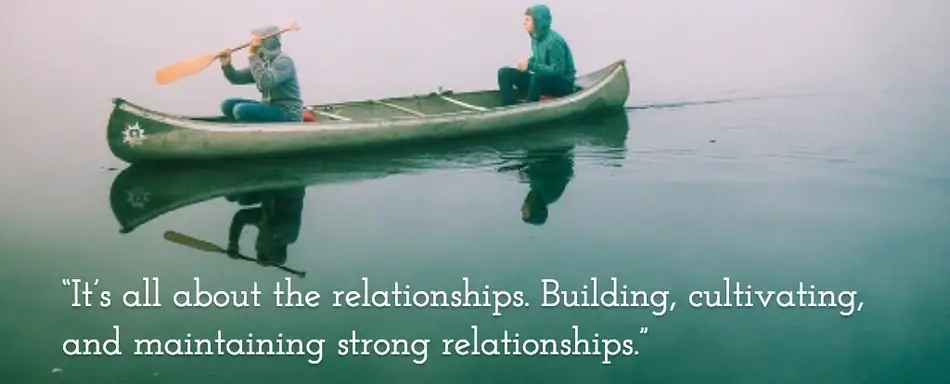5 Practices of Successful Nonprofit Leaders

New Executive Director? Been in your role for a while? Regardless of where you are, we are always seeking advice for ways to be more successful in our work.
Five current Executive Directors let me pick their brains about what they do that contributes to their successes. This group started out as grocery store baggers, movie theater employees, amusement park waiters, church secretaries, and camp counselors and are now leaders of organizations and teams all over the country.
Our Executive Directors:
- Simon Amiel: Executive Director, Mentoring Works Washington near Seattle, Washington
- Maureen Fisher: CEO, SOLVE in Portland, Oregon
- Jeff Franco: Vice President & Executive Director, City Year Washington, DC
- Nik Howard: Executive Director, Teach for America Sacramento/Stockton, California
- Suzanne St. John-Crane: CEO, CreaTV in San Jose, California
Here's what they had to say:
Get to know your team
In his first 90-120 days, Amiel spent tons of time “building credit” by both asking staff questions and listening to answers. The worst thing he says we can do is, “Ask people for their thoughts and not respond or just listen when things come up.” He heard from his team that staff meetings could use work, so he responded with tools from Death by Meeting to focus their time weekly on how the team accomplishes work together.
Howard meets weekly one-to-one with each of his staff members. He has quickly learned as they have grown from serving 1,000 to 5,000 students in just three years the importance of relying on his team: "I can’t get all the work done myself. It is key that I can lead through my staff and leverage my relationships with them to bring out their best leadership qualities.”
Tip: Don’t only get to know your team, allow them to get to know you too! 10 things authentic leaders do.
Make sure you have the right people on your team
Fisher is sure this is THE most important thing. Not only the right people, but in the right roles. “It starts and stops with the people,” she stresses. She works to make sure expectations are clear and people are rewarded for good work. She believes in her staff and works to help them believe in themselves. Leadership rotates, she says, “We are a flock of geese flying in formation. The lead goose isn’t always the same. We draft off each other.”
St. John-Crane shares, “I better like the people I work with and have a culture that feels good...I’m spending so much time with these folks.” She focuses on building a team culture of collaboration, cooperation, and creativity. She is also dogged about annual performance reviews for her staff and providing creative rewards and stretching resources when she can for her staff.
Tip: Formal performance reviews are important, but don’t let them be the only place you are giving feedback (positive or negative.) Read on for this and other mistakes bosses make in performance reviews.
Develop a practice of mindfulness and self-care
St. John-Crane attributes developing a practice of mindfulness while as a fellow with American Leadership Forum. She admits to being quite the multi-tasker early in her career because that was the culture of “how things got done.” However, now she practices mindfulness by being present with the one thing that is front of her and focusing her attention on that---she is no longer on the phone, eating lunch and checking email all at the same time...sound familiar? Read on for mindfulness tips.
Exercising in the mornings is a daily practice that keeps Franco’s head clear and allows him to start the day right. “With evening events and work commitments, the nights are not as reliable.”
Tip: As the leader, you will role model self-care and work-life balance in your own choices. Start with yourself and others will follow your lead!
Get organized
Fisher’s number one daily ritual to getting work done is making sure she replies to phone calls within 24-hours and doesn’t leave work each day until she has no unread/un-responded to emails. She also makes and keeps lots of lists - one for tasks from her board, one from her calendar and one for her daily to-dos - everything she says, “Has to go somewhere, so nothing falls through the cracks.”
Todoist is an app that Amiel uses to stay organized and connected. It turns emails and calendar items into tasks, syncs with all of his devices and can be delegated or shared with other staff. The key is to find an organization system that works for you and stick to it.
Tip: How to get and stay organized at work (PDF).
Understand and embrace your community
Howard stresses the importance of learning your community as deeply as you can within the context of the organization, “Even if you are from the area, make sure you understand other existing programs, local politics, what the community needs and how your organization fits in and can be of service.” In your role as Executive Director, you will need to put a new organizational lens on for how you view your community.
“It’s all about the relationships,” says Franco, “building, cultivating, and maintaining strong relationships.” Being out in the community is how he has successfully built the reputation and presence of his organization. “Leave everything else about running the organization in the hands of your capable staff” he says, “so you can work externally connecting dots, meeting people, and moving your organization forward.”
Tip: Howard also adds that it’s pretty important to connect to your personal why about the work. “Don’t just be an Executive Director for the title,” he urges, “the title sounds cool but it’s so much responsibility.”
Resource bonus: Check out the Bridgespan 2014 top 25 nonprofit management tools, evaluated by a group of nearly 500 Executive Directors.
Did you enjoy this post? There's plenty more where this came from! Subscribe here for updates.
By Megan O'Leary

